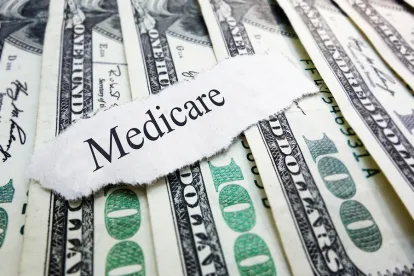The CMS IPPS for FY 2022 covers the usual topics, including a 2.5 percent increase in the standardized amount for general acute care hospitals. Some other highlights include:
1. Graduate Medical Education IRIS Reporting
Under the FY 2022 IPPS Final Rule, for cost reporting periods beginning on or after October 1, 2021, hospitals’ GME (weighted and unweighted) and IME FTE counts listed in IRIS data must match the total GME and IME FTE counts reported on Worksheets E-4 and E, Part A of the filed Medicare cost report. Providers must also use the new Extensible Markup Language (XML)-based IRIS file format, which is designed for consistency with FTE reporting on the cost report.
To address concerns raised in response to the FY 2022 proposed rule, for cost reporting periods before October 1, 2022, hospital cost reports will not be rejected if the IRIS and cost report FTE counts do not match. Additionally, to address potential rounding errors, CMS will also establish a tolerance threshold for variances between the cost report and IRIS data. CMS will also release a list of software vendors that have been validated to meet the new IRIS XML specifications.
-
CCA/New Residency Slots. Separate from the IPPS Final Rule, CMS published a final rule with comment period on Dec. 27, 2021 to implement sections of the Consolidated Appropriations Act of 2021 (CAA) that provide for 1,000 new residency positions to be distributed to qualifying hospitals from 2023-2027. The CCA also allows qualifying hospitals to establish new FTE caps and per-resident amounts. Comments on the GME final rule are due February 25, 2022. The GME final rule:
-
Creates 1,000 new Medicare-funded residency positions with up to 200 new positions per fiscal year to be distributed beginning in FY 2023. Hospitals are prioritized based on HPSA scores and four prioritization categories defined by statute, and they may receive up to 5 FTEs per year depending on the length of the specific residency program. Applications for each FY are due by March 31 of the prior year and the online application system is available at https:// www.cms.gov/Medicare/Medicare-Feefor-Service-Payment/AcuteInpatientPPS/ DGME.
-
Incentivizes the creation of new rural training track (RTT) programs, and the addition of additional RTTs to existing urban core programs of the same specialty, by giving both hospitals a rural track FTE limitation or, for existing programs, by adjusting such limitation. CMS will also provide additional FTE resident slots to any ACGME-accredited program in any specialty where the residents spend more than 50 percent of the entire residency program in a rural area. And during the five-year cap growth window for RTTs, FTE residents participating in the RTT will not be included in the hospital’s 3-year rolling average calculation (or the cap on the IME IRB ratio on Medicare cost reports) during the cost reporting periods prior to the beginning of the applicable hospitals’ cost reporting period that coincides with or follows the start of the sixth program year of each rural track.
-
Allows hospitals that established a very low or $0 PRA that meet certain criteria to establish new PRA if the hospital trains residents in a cost reporting period beginning on or after Dec. 27, 2020 and before Dec. 26, 2026. And similarly allows hospitals that have very low FTE resident caps and meet certain criteria to have their cap “adjusted” if the hospital begins training FTE residents in a new residency program in a cost reporting period beginning on or after Dec. 27, 2020 and before Dec. 26, 2026.
2. COVID-19 Add-On Payments
In response to the COVID-19 PHE, CMS established the COVID-19 Treatments Add-on Payment (“NCTAP”) for eligible discharges during the PHE. As CMS anticipates inpatient cases of COVID-19 beyond the end of the PHE, the NCTAP was extended through the end of the fiscal year in which the PHE ends. As part of the NCTAP, CMS provides enhanced payments for eligible inpatient cases that involve the use of certain new products authorized or approved to treat COVID-19 (i.e., therapeutics). Hospitals are generally reimbursed a fixed payment amount for the services they provide during an inpatient stay, even if their costs exceed that amount. Under current rules, hospitals may qualify for an additional “outlier payment,” but only when their costs for a particular patient exceed a certain threshold. The NCTAP allows hospitals to qualify for additional payments when they treat patients with certain new products approved or authorized to treat COVID-19. A hospitalization qualifies for NCTAP if (1) a technology is used that has FDA approval or an EUA with an indication for the treatment of COVID-19; (2) the hospitalization is eligible for the 20% increase in MS-DRG payment per the CARES Act, including the hospital documenting a positive COVID-19 laboratory test; and (3) the cost of the hospitalization exceeds the MS-DRG payment. The enhanced payment will be equal to the lesser of: (1) 65 percent of the operating outlier threshold for the claim; or (2) 65 percent of the cost of a COVID-19 stay beyond the operating Medicare payment (including the 20 percent add-on payment under section 3710 of the CARES Act) for eligible cases.
CMS also did not finalize the proposal to discontinue the NCTAP on October 1, 2021, for a product that is approved for new technology add-on payments beginning in FY 2022. Instead, hospitals will be eligible to receive both NCTAP and traditional new technology add-on payments for patient stays that qualify. As with the NCTAP, this provision will apply “through the end of the fiscal year in which the PHE ends, with the new technology add-on payment reducing the total amount of the NCTAP.” Additionally, the final rule has added authorization of additional payments for diagnostics and therapies to treat COVID-19 during the time of the current PHE.
3. Quality Report for COVID-19 Vaccinations
In the FY 2022 IPPS final rule, CMS added a new measure to the Hospital Inpatient Quality Reporting (IQR) Program that will require hospitals to report the percentage of health care personnel (HCP) who have received a vaccination course against COVID-19. CMS believes it is important to incentivize and track healthcare provider vaccination in acute care facilities to protect healthcare workers, patients, and caregivers. The numerator of this measure is the cumulative number of healthcare personnel eligible to work in the healthcare facility for at least one day during the submission period and who received a completed vaccination course against COVID-19 since the date the vaccine was first available or on a repeated interval if revaccination is recommended.
The denominator of the measure is the number of healthcare personnel eligible to work in the healthcare facility for at least one day during the submission period, excluding persons with contraindications to the COVID-19 vaccination as described by the CDC. The first reporting period spanned October 1, 2021 through December 31, 2021 and will be applicable for payments in FY 2023. Then, for CY 2022 and subsequent years, CMS is proposing data collection for a full year of data
4. DSH
CMS chose not to finalize its proposal to modify the Medicaid fraction of the DSH formula to limit the Medicaid days to patients eligible for inpatient hospital services under an approved State plan or under a Section 1115 waiver, where Section 1115 days would count only if the patient received inpatient hospital insurance coverage on those days. CMS plans to continue to review this limiting proposal.
5. Bad Debt
CMS finalized a proposal to require state Medicaid agencies to enroll providers so that the Medicare patient cost-sharing amounts can be determined. This is necessary for providers desiring to claim Medicare bad debt to comply with Medicare’s “must bill” policy to Medicaid for dually-eligible patients to attempt to collect from Medicaid before seeking Medicare bad debt reimbursement.




 />i
/>i

